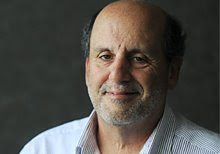A new government report offers seemingly encouraging news about consumer spending and saving. But what do the numbers really tell us?
The Commerce Department said Monday that consumer spending rose 0.6 percent in January, even better than the 0.4 percent gain that economists expected, the Associated Press reports. The increase in spending came after a record six declines, including a 1 percent drop in December when retailers endured their worst holiday shopping season in at least four decades.
The January increase was driven by a 1.3 percent rise in purchases of nondurable goods, led by much higher spending on food. Durable goods posted a tiny 0.1 percent increase, as Americans again avoided spending on cars and other large items.
Also, the personal savings rate surged to 5 percent, the highest level since 1995 as consumers saved more of their incomes amid the deepening recession.
So how can we be spending more and saving more? UNC Charlotte economist Caroline Swartz offers an explanation to The Squeeze - although perhaps not the one you want to hear:
Says Swartz:
"The rise in consumer spending in January suggests further hunkering down by American consumers. Consumer spending grew slightly faster than personal income, but the greatest growth was in the non-durables category, mainly food.
Most households can run down inventories of food items and everyday consumables for a period of time to reduce spending. The reported 1.3 percent growth in spending on non-durables could suggest that January was a month of re-stocking in preparation for continued economic uncertainty.
This gloomy interpretation is supported by the relatively high rate of savings: 5 percent of income. This savings is most likely precautionary savings -- stashing funds away against the possibility of a reduction in income."
Swartz says that while consumers have led the way out of many economic recoveries since World War II, they are uncertain now in the face of troubling housing values, retirement portfolios, job security and government deficits.
Fellow UNCC economist John Connaughton says consumers might also be ready to spend on durable goods - a truer indicator of economic rigor - but they won't be given a chance until banks substantially increase lending.
"I don't expect consumer durable purchases to pick up anytime soon," he said. "So car sales, appliances, and home sales are still going to be slow until consumers with 650 credit scores can get a loan."
Monday, March 2, 2009
We're spending more - but on what?
Subscribe to:
Post Comments (Atom)





2 comments:
Alot of people I know, including me, from sales clerks to doctors are buying food in bulk, freezers, seed, plants,guns and ammo (ammo is getting hard to find).
Bottom line cut spending and lower taxes or we all will have a much lower standard of living. I'm tired of bailing people out regardless of financial situation. Enough is enough!!!!
Post a Comment